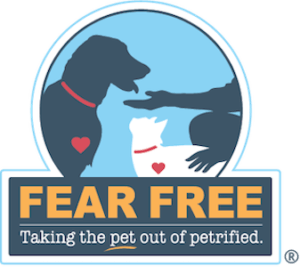Quiz Summary
0 of 20 Questions completed
Questions:
Information
You have already completed the quiz before. Hence you can not start it again.
Quiz is loading…
You must sign in or sign up to start the quiz.
You must first complete the following:
Results
Results
0 of 20 Questions answered correctly
Your time:
Time has elapsed
You have reached 0 of 0 point(s), (0)
Earned Point(s): 0 of 0, (0)
0 Essay(s) Pending (Possible Point(s): 0)
Categories
- quiz 0%
- 1
- 2
- 3
- 4
- 5
- 6
- 7
- 8
- 9
- 10
- 11
- 12
- 13
- 14
- 15
- 16
- 17
- 18
- 19
- 20
- Current
- Review
- Answered
- Correct
- Incorrect
-
Question 1 of 20
1. Question
What is the top culprit for fewer pets visiting the vet?
CorrectIncorrect -
Question 2 of 20
2. Question
Fill in the blanks with the most fitting option: Animals have both ____- ‘the good stress’ that helps the animal perform better for the needed task and _____ that launches the animal into a state of survival and ‘fight or flight’ type functioning.
CorrectIncorrect -
Question 3 of 20
3. Question
The delayed stress response is associated with which of the following:
CorrectIncorrect -
Question 4 of 20
4. Question
______ is any experience, environment, inanimate or living object, which disrupts the body’s normal state of functioning. Assessing and qualifying the pet’s reaction as indicative of fear, anxiety or stress can be extremely challenging.
CorrectIncorrect -
Question 5 of 20
5. Question
______ is “The non-specific response of the body to any demand for change.”
CorrectIncorrect -
Question 6 of 20
6. Question
Which of the following is NOT true of stress:
CorrectIncorrect -
Question 7 of 20
7. Question
Physiologic changes that occur in the body during fight or flight causes an elevation in all of the following except for (choose the incorrect answer):
CorrectIncorrect -
Question 8 of 20
8. Question
True or false: There are two general phases of the stress response.
CorrectIncorrect -
Question 9 of 20
9. Question
True or false: Specific areas of the body, like the ears or tail, can be looked at independently from the rest of the body and still allow for an accurate reading of the animal’s emotional state.
CorrectIncorrect -
Question 10 of 20
10. Question
True or false: Dogs that are overly active or act in a silly, seemingly puppy-like way at the vet are most likely having a great time and are fully relaxed.
CorrectIncorrect -
Question 11 of 20
11. Question
The effects of stressful veterinary visits include all of the following except for (eliminate the incorrect answer):
CorrectIncorrect -
Question 12 of 20
12. Question
True or false: Body language is always congruent in animals; meaning each part of the body is likely to display a consistent message from tip of the nose to the tail.
CorrectIncorrect -
Question 13 of 20
13. Question
Fear Free benefits of keeping pets calmer during veterinary care include all of the following except for (eliminate the incorrect answer):
CorrectIncorrect -
Question 14 of 20
14. Question
True or false: The main way the trainer should gauge stress levels of the animal during the vet visit is by whether or not the dog or cat is taking treats regardless of the animal’s body language and how the animal is taking the treats.
CorrectIncorrect -
Question 15 of 20
15. Question
True or false: Most distractions have little benefit for bettering the animal’s emotional state.
CorrectIncorrect -
Question 16 of 20
16. Question
Requesting the animal to perform known tricks in the veterinary setting has which of the following benefits:
CorrectIncorrect -
Question 17 of 20
17. Question
True or false: When a cat is relaxed their tail and paws are likely to curl in close to their body.
CorrectIncorrect -
Question 18 of 20
18. Question
_______ is recognizing all the sensory and environmental inputs that a patient might experience and using this information to approach the patient in the calmest, least confrontational way possible.
CorrectIncorrect -
Question 19 of 20
19. Question
True or false: Pain influences fear, anxiety and stress (FAS). As such, the veterinarian’s pain management plan is an important piece of managing the FAS levels of patients in care.
CorrectIncorrect -
Question 20 of 20
20. Question
The _____ serves as a guide for assessing and responding accordingly to the animal’s emotional state
CorrectIncorrect



